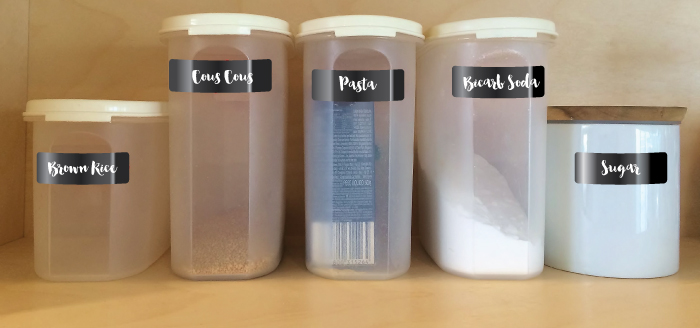How to make your pantry keep itself tidy
Posted by on

We start by consulting the experts
We’ve asked professional organizer Jo Carmichael of All Sorted Out for some expert pantry-organizing advice and we’re going to try it out on our own pantry.
What's at stake?
Like most organizing projects, there are huge time and money savings to be made. Putting our pantry in order will help us to see what we have, help us manage our use-by-dates better and help us prepare those shopping lists. It also, importantly, provides inspiration for cooking meals and can make things a little easier in the pre-dinner rush. As Jo points out, nobody has time to waste with a disorganised pantry!
According to Jo, we can get our pantry sorted in 6 easy steps:
1. Clear out the pantry
Our first job is to clear everything out of the pantry, clean it and get a good look at the space. As the things come out one by one we check for empty packs (thanks kids!) and expiry dates.
2. Emphasize the “everyday” zone
This is those convenient drawers nearest the countertops or the shelves around shoulder to hip height. It’s where you put all the things which you use day to day – sauces, cereals, crackers - and all the packs which are open.
Hungry family members will always check this zone first when foraging for food, so this helps them to use up what’s already open.
3. Now think about putting the food into groups
What makes sense for you? In our kitchen it’s supplies for baking, for making dinner, for breakfast and for snacks and making lunches.
Physically group those supplies together on a shelf or in a drawer. They could even share a basket or tub.
4. Add another zone for “supplies”
Find another zone in your kitchen for unopened packs and extra supplies (also cans of food which last for some time). This could be drawers or cupboards and they don’t have to be as convenient as your everyday zone.
5. Put food into containers
If you like a food and buy it repeatedly, then it probably needs a container. This will keep food fresher and away from pests. It will stop kids from spilling foods as they try to pour them from packs or bags. It also provides you with a visual reminder when making shopping lists – it’s easy to see what’s running low when your favourite foods each have their own box or jar.
6. And the final step? Pantry Labels
A lovely set of pantry labels will keep your hard-won organisation in place.
Labels are crucial when you need to know your plain flour from your self-raising flour, but they’re also helpful when you’re making shopping lists, for family members who aren’t sure what the arborio rice looks like and for establishing a permanent order on your pantry space.
Labelling is a psychological tool that tells family members “This is the Brown Sugar. It has its own container and its own label and its own spot on the shelf. So use it and put it back.”
We didn’t stop at the containers, we also labelled the baking shelf, the dinners shelf, the snacks shelf and the breakfast shelf. Even the fridge got a mini-makeover, with labelling of where eggs, butter, milk, cheese and yogurt should live.
Unpacking the shopping is now a breeze with designated spots for regular purchases.
 Loading... Please wait...
Loading... Please wait...

